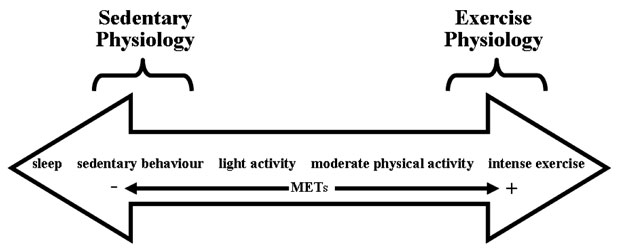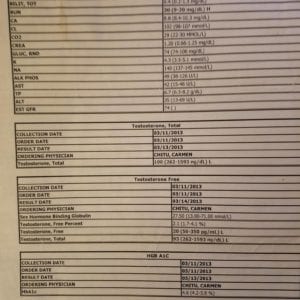“So many pedestrians, so little time”
— bumper sticker
There are many excuses commonly used to explain lack of progress in bodybuilding. Poor genetics. Poor facilities. No motivation. Illness. Your drug supplier is incarcerated. The list goes on and on. However, the most common excuse for chronic ectomorphy is also one of the lamest— “I don’t have enough time.”
Now, this isn’t an info-mercial, so I’m not going to tell you that it takes as little as three minutes a day (I think Tony Little has a trademark on this phrase, anyway). But virtually everyone can find adequate time to train, if they have reasonably good time management skills, and if they understand exercise program design.
So, if you’re one of those people who always seems short on time, here’s where I’d like to start: Do you really need more time, or more discipline? If you don’t have enough time to train, something is askew on a bigger level. The majority of people have time to do things which they have assigned a high priority to.
Training doesn’t take a lot of time— it takes a lot of energy. I believe that 95% of all people can accomplish their training goals in three hours per week. Case in point— I recently put over 20 pounds on a 37 year old competitive martial artist in just over four months of training. The workouts were performed three times a week, and each session took about 40 minutes after the warm up.
Can’t find three hours a week? Consider this: three hours amounts to about 2% of your available time every week! It is approximately 3% of your waking hours every week! Look at these numbers carefully and then tell me you don’t have enough time to train.
I do realize that some people have it tough— two or three jobs, family, commuting, and so on. It is primarily for these people that this article is written.
However, even if you aren’t chronologically challenged, you’ll find these suggestions and strategies valuable for reclaiming more time for other things in life.
I’ll use a three step approach in this post:
1) Step one: How to distinguish between lack of time and lack of discipline
2) Step two: How to locate time you didn’t know you had
3) Step three: How to optimize the time that you do have to train
Do you really have no time?
The fastest way to determine this is to ask yourself “How much time do I waste procrastinating, watching TV, going to bars, etc.?” For a one week period, carry a small notebook, and every hour, make a short entry describing what you are doing. Then, review this time log and chances are, you’ll find the time you’re looking for.
In my opinion, most people are fairly inefficient, and through a bit of organization and priorities identification, can find plenty of extra time in their schedules.
How to find more time
Improve sleep quality
If you still aren’t finding time, consider waking up earlier (and/or going to bed later) in order to find extra time. Many people do do not sleep well, despite being in bed for 9-10 hours a night. Eating the wrong foods before bed, keeping the TV on, and numerous other bad decisions reduce the quality of sleep.
Try the following suggestions from the excellent book Science of Sports Training (available by calling Stadion Publishing at 800-873-6171), and you’ll find that you’ll be able to cut an hour off of your sleep time every night with no ill-effects:
1) In general, do not eat for the two hours prior to bed-time. Avoid any stimulants, including coffee, tea, cola’s, or garuana.
2) Your bedroom should ideally be well-ventilated, and it should be dark, silent, and cool.
3) Avoid hot baths, showers, sauna, or jacuzzi’s before going to bed. Cool baths induce sleep rapidly, however.
I would also recommend avoiding evening workouts if possible, especially eccentric-dominated training.
Another useful tool is a specially made lamp which gradually becomes brighter and brighter at a pre-set time, which simulates waking up to the sunrise, rather than being jolted out of sleep by an alarm clock.
Turn off the boob tube
Television is perhaps the biggest time-thief in the average person’s life. Simply by learning how to use their DVR, most people can save themselves over an hour a day simply by fast-forwarding through the commercials!
Watching TV is a hypnotic, self-perpetuating activity that not only wastes time, but also lowers energy levels. Many schools have implemented a “No TV” week for their students. Try it. Many people find they have so much free time, they don’t know what to do with it.
Improve your reading speed
If you do a lot of reading, learn how to speed-read. A good place to start is The Evelyn Wood Seven-Day Speed Reading and Learning Program by Stanley D. Frank published by Barnes & Noble.
Use your computer wisely
While computers are a great tool for saving time, they are not always used to their best advantage. Chat rooms in particular can be a huge time drain. If you spend a lot of time on a computer, consider buying the fastest one you can afford. Also, if you spend a significant amount of time on the internet, make sure you have the fastest modem you can afford. A computer is nothing more than a tool: if used wisely, it will save you time, if used unwisely, it costs you time.
Using your time as efficiently as possible
After you get an accurate estimate of how much time you really have available to train, let’s consider how to use this time as wisely as possible.
1) Concise warm-ups: many trainees spend far too much time warming up. In most cases, 6-8 warm-up sets, with 15-30 seconds rest between sets, is plenty. Many people will start their warm-ups with, for example, an easy 135×10, and then rest 3 minutes! Another mistaken notion that your last warm-up set must consist of at least as many reps as your first work set. The purpose of the last warm-up set is to make an accurate determination of the correct weight for your work sets— it should only take a rep or two to make this decision.
2) Utilize periodization: very brief workouts work much better if you can occasionally do longer ones. For example, you might perform 30 to 45 minute workouts for 3 weeks, and 60 minute workouts for one week, and repeat. Rotate long and short workouts for each muscle also. In other words, for three weeks, you might use 4-5 sets per workout for chest, but only 1-2 sets for back, and then for the next three week phase, reverse the pattern. In this way, each muscle group experiences a “development” phase and a “maintenance” phase, which, when you think about it, is far superior to a continuous maintenance phase.
3) Don’t skimp on frequency: Your workouts can be brief, but you must maintain optimal training frequency for best results. Training a muscle for 25 minutes twice a week is far superior to training it for 60 minutes once every two weeks.
4) Train opposing or antagonistic bodyparts back to back: All muscles are paired with another muscle (called an “antagonist”), which (ideally) is capable of opposing its force. Training muscles in antagonistic pairs is time-efficient on several levels:
• Because antagonists are usually located close to each other, a set for one muscle becomes a warm-up for the other.
• For various neurological reasons, when you perform a set for one muscle (say, the biceps), the antagonist (the triceps) becomes facilitated for a better contraction.
• Compared to training all sets for one muscle, and then all sets for the second muscle, training antagonists “back to back” allows for twice as much rest between two sets of the same exercise. For example, if you’re performing bench presses and chin-ups with two minutes of rest between sets, you’ll actually get over four minutes of rest between two successive sets of bench presses.
5) Use a home gym: For many people, using a home gym saves an average of 20 minutes per workout in travel, parking, and changing. If space and cost is a concern, consider the following home gym:
Swiss ball from Sissel (aprox. $30)
Power Block dumbbell set from SportStrength (aprox. $650)
6×8 foot 3/4″ thick weightroom mat from Bigger, Faster, Stronger (aprox.$115)
300 pound Olympic barbell set (aprox $100)
Chin-up bar (aprox $40)
This home gym, which allows you do do a huge variety of exercises, costs less than $1000, and takes up only 48 square feet of space. Much of this equipment can be picked up second-hand for a significant reduction in price.
6) Emphasize compound movements for the posterior kinematic chain (glutes, hams, low back) It is well known in the strength training community that squats, deadlifts, and their numerous permutations have the greatest return per unit of investment than any other type of exercise.
The Workouts
General Notes:
1) These workouts should be used as suggestions, not iron-clad laws. It’s more important to understand the principle behind them than to try to perform them literally. If you do not have the experience, facilities, or health status to perform these exercises, select an appropriate substitute.
2) If you have a muscle or muscle group which is already well-developed, concentrate on other areas
3) Dips can potentially be damaging if you already have existing shoulder problems, particularly if you have ever experienced a dislocated shoulder.
4) Although I have outlines specific repetition brackets, it is important to emphasize volume (through the use of higher reps) and intensity (through lower repetitions) sequentially, utilizing one method for 3-4 weeks, followed by the other for 3-4 weeks.
5) The Olympic lifts and their modifications are often my first choice for efficient training tools, however, I realize many readers do not have a training background in these lifts. If you do have experience in these movements, you can substitute them where appropriate in the following workouts.
The 45 minute workout
If you’re able to train 3 times a week for 45 minutes, try the following approach:
Monday
00:00 to 00:05: Warm-up
00:05 to 20:00: Incline Dumbbell Press on Ball; Stiff-leg Deadlift: Perform back to back, 5 sets of 6-8 repetitions each, using a 4-5 second tempo and resting 90 seconds between each set
00:20 to 45:00: Ball Crunches; Seated Dumbbell Curls. Perform back to back, 5 sets of 6-8 repetitions each, using a 4-5 second tempo and resting 90 seconds between each set
Wednesday
00:00 to 00:05: Warm-up
00:05 to 20:00: Front squat; Lying Dumbbell Tricep Extension: Perform back to back, 5 sets of 6-8 repetitions each, using a 4-5 second tempo and resting 90 seconds between each set
00:20 to 45:00: Military Press; Leg Press Calf Raise. Perform back to back, 5 sets of 6-8 repetitions each, using a 4-5 second tempo and resting 90 seconds between each set
Note: As the bar is already on the rack from front squats, I have chosen military presses for deltoids to minimize set-up time.
Friday
00:00 to 00:05: Warm-up
00:05 to 20:00: Chin-up; Dips: Perform back to back, 5 sets of 6-8 repetitions each, using a 4-5 second tempo and resting 90 seconds between each set
00:20 to 45:00: Bent-over Row; Seated Leg Curl. Perform back to back, 5 sets of 6-8 repetitions each, using a 4-5 second tempo and resting 90 seconds between each set
The 30 minute workout
If you’re able to train 3 times a week for 30 minutes, try this approach. It utilizes circuits of 3 exercises per session. For the following workouts, perform 4 sets of 8-10 repetitions with a 4-5 second tempo and rest 60 to 90 seconds between each set, depending on the reps and tempo you use (the higher the reps and the longer the tempo, the shorter the rest).
Monday
00:00 to 00:05: Warm-up
00:05 to 00:30: Three exercise circuit:
Set 1: Pull-ups
Set 2: Back Squat
Set 3: Seated Dumbbell Press
Wednesday
00:00 to 00:05: Warm-up
00:05 to 00:30: Three exercise circuit:
Set 1: Flat Dumbbell Bench Press
Set 2: Standing Calf Raise
Set 3: Seated Dumbbell Hammer Curl
Friday
00:00 to 00:05: Warm-up
00:05 to 00:30: Three exercise circuit:
Set 1: Stiff leg Deadlift or Reverse HyperSet 2: Dips
Set 3: Ball Crunch
The 15 Minute Workout
Let me state right off the bat that if you’re reading this and can only find 15 minutes to train, your life is out of balance! However, if you truly are able to train 3 times a week for only15 minutes, try this approach. It utilizes one exercise per session.
Monday
00:00 to 00:05: Warm-up
00:05 to 00:15: Squat or Deadlift
Wednesday
00:00 to 00:05: Warm-up
00:05 to 00:15: Flat Dumbbell Bench Press or Dips
Friday
00:00 to 00:05: Warm-up
00:05 to 00:15: Chin-up or Pull-up
The “Busy during the week, but weekends are free” workout
This is a situation that many people find themselves in: the weekdays are a race against time, but the weekends are relatively peaceful. This workout is designed with longer workouts involving large muscle groups over the weekend, and a shorter session involving smaller, less energy-intensive muscles on Wednesday. The “nuts & bolts” should be fairly intuitive— just utilize the same principles and acute training parameters as the previous workout schedules.
Saturday (Chest & Delts)
Sunday (Legs & Back, & Abdominals)
Wednesday (Bi’s, Tri’s, & Calves)
General references on time (and life) management
The 90 Minute Hour by Jay Conrad Levinson (©1990, The Penguin Group, New York, ISBN:
0-452-26596-7)
First Things First by Steven Covey (©1994, Fireside, New York, ISBN: 0-671-86441-6)
Organize Yourself! by Ronni Eisenberg & Kate Kelly (©1986, Macmillian Publishing Co., New
York, ISBN: 0-02-028420-9)
Unlimited Power by Anthony Robbins (©1986, Fawcett Columbine, New York, ISBN: 0-449-
90280-3)








It is a nice article. It is also a very difficult workout schedule. I think this workout can be very difficult for first timers. Can’t wait to finish this article. Thanks for posting
Body Building Expert, if you’re short on time (the sbject of this article) you can do the 15 minute workouts
Good stuff. 3 hours per week is the same advice I give people. My own workouts last approx 45 mins or so. If people are efficient and focused with their time, they can get the results they desire in surprisingly little time.
This is great advice you don’t see often enough in the realm of exercise and eating right. My experience with training clients over the past 20 years is that time management is the #1 excuse for poor results and lack of consistency. When I start a new client I spend time setting goals and strategizing ways to “make time” to take action on their priorities for fat loss and muscle building.
Repeating this at each training session and e-mail reminders also helps to reinforce this until it becomes a habit.
I guess it all depends on how your fitness levels are…
Great practical advice about finding more time. It is all too easy to say “I’m too busy to train”, but amazing that time can be then found to sit in front of the tv for a couple of hours a night. It really is a matter of prioritising and deciding what is important. When I got back into training a few years back, I found one way to commit to it, was to write it in my diary as though it was an appointment, even when it wasn’t a session with a trainer. I was also realistic about the time needed – not to over or under estimate the time commitment needed. Now I’d rather give up other things instead of my training time.
Recently I haven’t had much time to workout but looks like I need to re priotize.
“I recently put over 20 pounds on a 37 year old competitive martial artist in just over four months of training.” says the writer. Was he on AAS? Are you saying all that added weight was lean muscle, no fat?